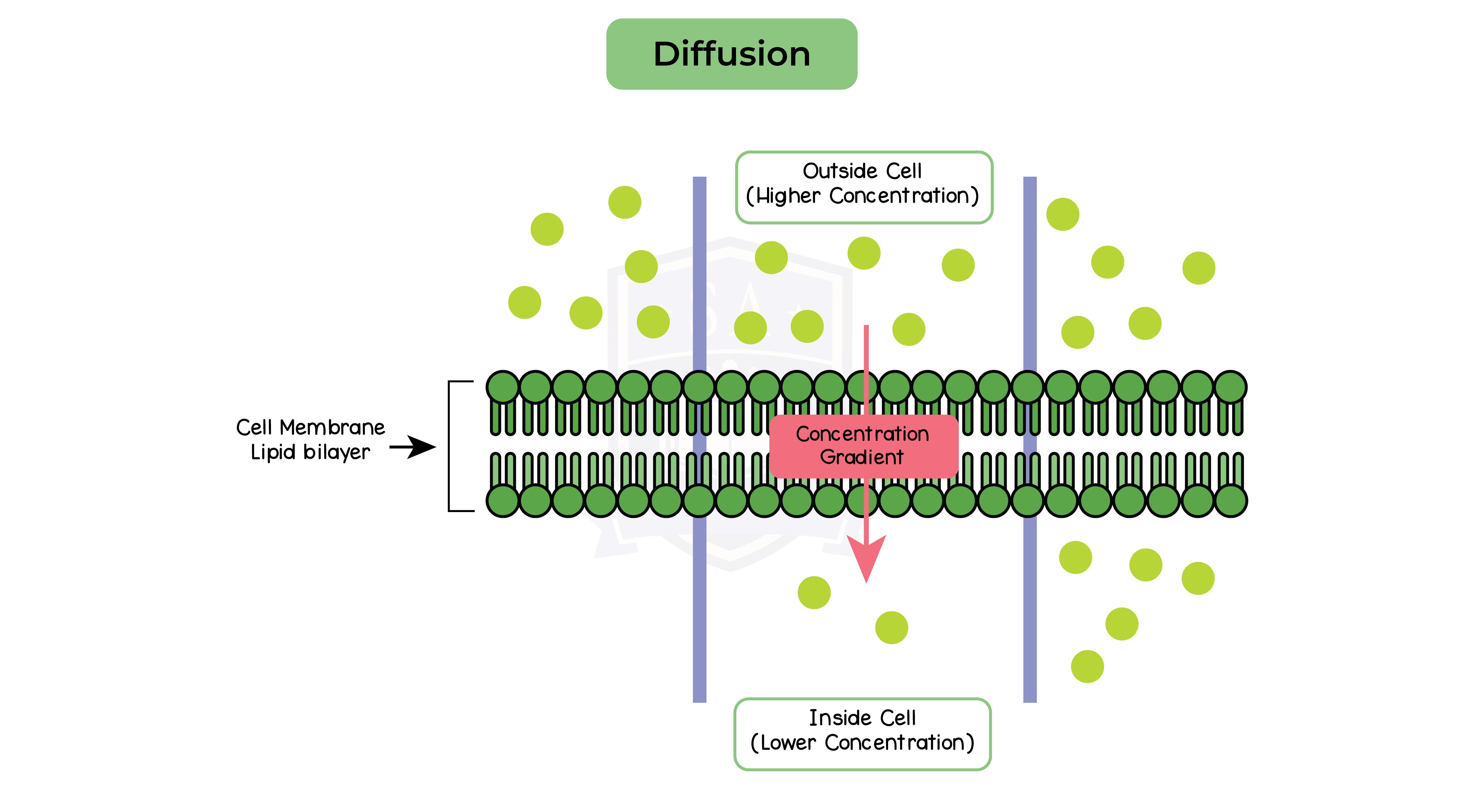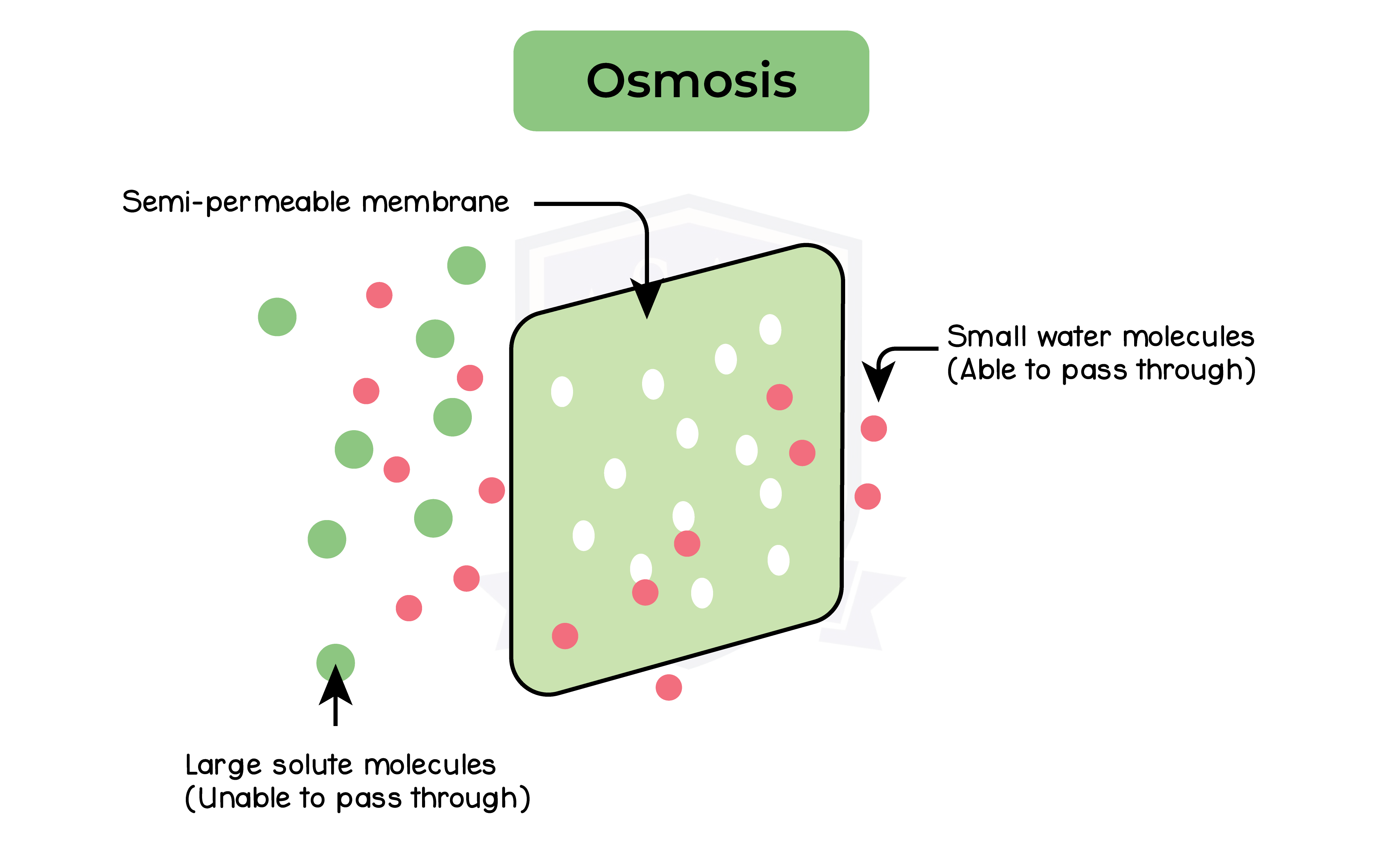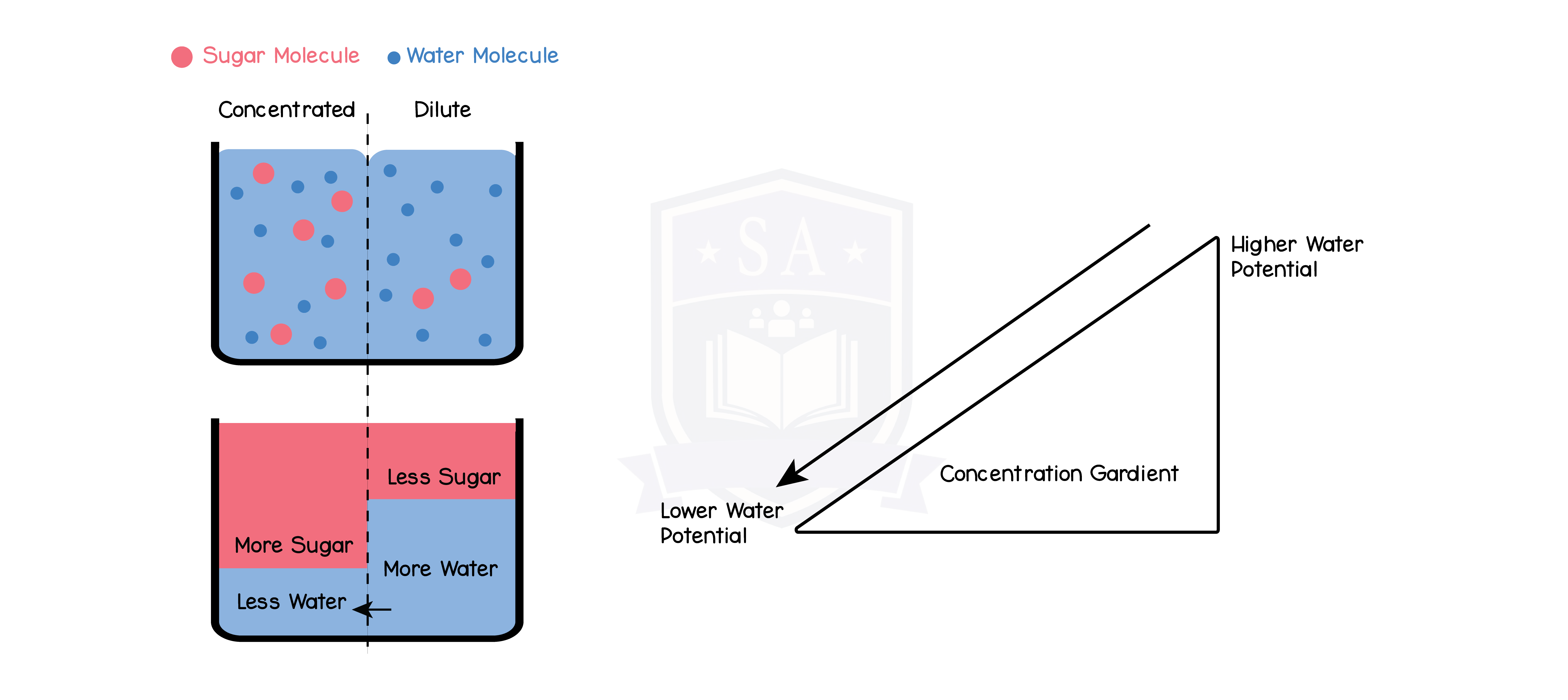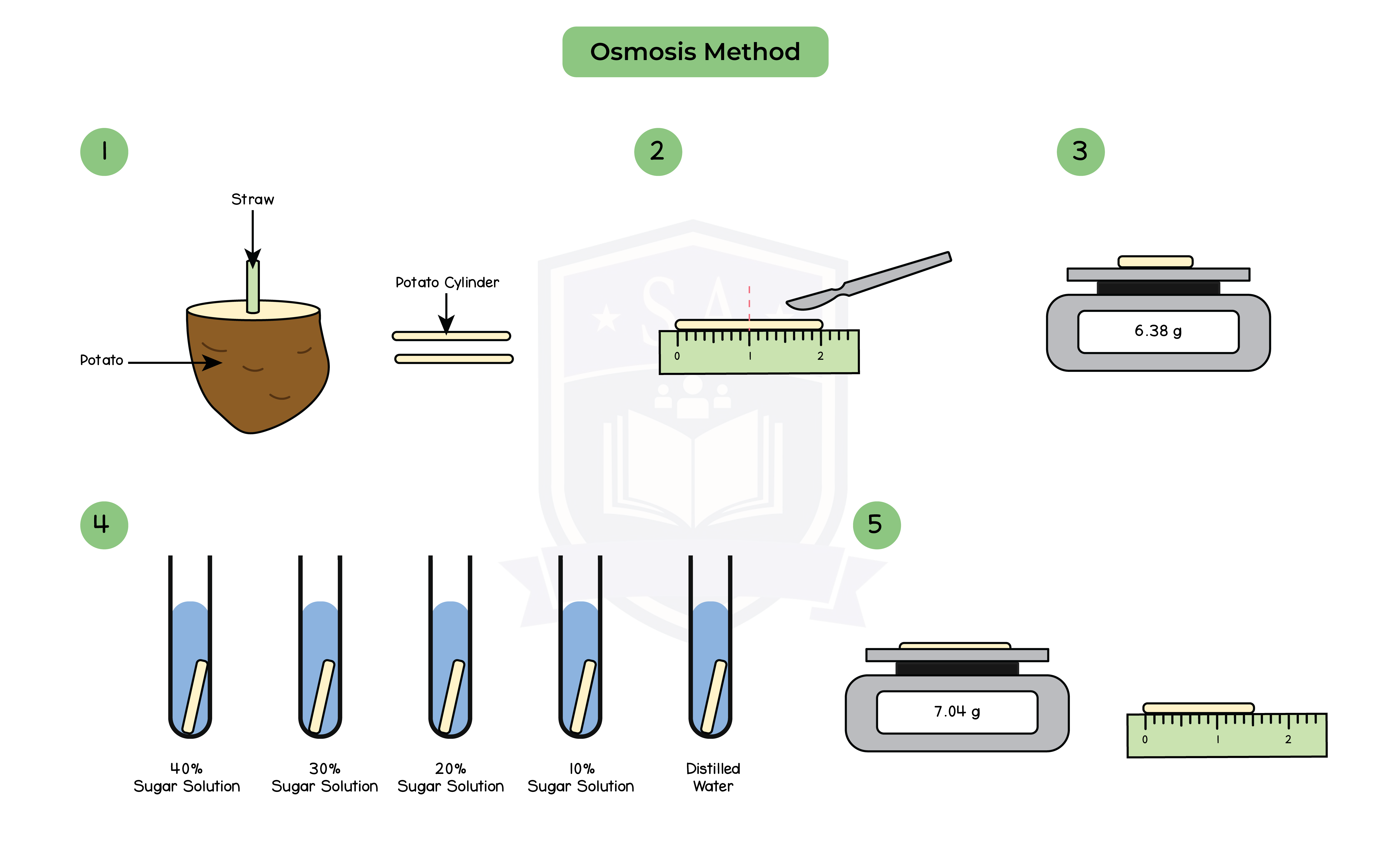REVISION NOTES
IGCSE Edexcel Biology
2.4 Movement of Substances Into and Out of Cells
2.4.1 Understand the processes of diffusion, osmosis and active transport by which substances move into and out of cells
Diffusion:
- Movement of molecules from an area of high concentration to an area of low concentration
- Affected by partially permeable cell membrane
- Restricts the movement of molecules down the concentration gradient
- Restriction is based on molecular size
- Smaller molecules like water can diffuse
- Larger molecules like salts cannot
- Passive process
Factors affecting diffusion:
- Temperature
- Increase kinetic energy
- Temperature
- Concentration gradient
- Surface area
- Larger surface area Increases the space available for diffusion
- Surface area
- Distance
- Longer the distance, lower the rate of diffusion
Osmosis:
- Net movement of water molecules from an area of high water potential to an area of low water potential through a partially permeable membrane
- Water moves down the concentration gradient
- Dilute solutions have a high water potential
- Concentrated solutions have a low water potential
- Passive process
Osmosis in animal cells:
- Causes loss or gain of water
- In concentrated solutions:
- Cells have a higher water potential
- Cells lose water and shrivel up
- In a dilute solution:
- Cells have a lower water potential
- Cells gain water creating turgor pressure
- Cells may bursts
Types of solutions:
- Isotonic solution
- Concentration of solute in external environment is the same as internal
- No net movement
- Hypertonic solution
- Concentration of solute in external environment is higher than internal
- Net movement of water out of the cell
- Hypotonic solution
- Concentration of solute in external environment is lower than internal
- Net movement of water into the cell
Osmosis in plant cells:
- Causes loss or gain of water
- Cell wall protects from cell lysis
- In concentrated solutions:
- Cells have a higher water potential
- Cells lose water
- Cell membrane shrivels up and detaches from cell wall
- Cells become flaccid or plasmolysed
- In a dilute solution:
- Cells have a lower water potential
- Cells gain water creating turgor pressure
- Cells become turgid
Active transport:
- Movement of particles through a cell membrane against the concentration gradient using energy
- Movement from an area of low concentration to an area of higher concentration
Requires protein carrier molecules
Active transport in animals:
- Food molecules diffuse across the small intestinal wall
- Only if concentration gradient between lumen and the bloodstream exists
- Active transport used for food molecules if concentration gradient does not exist
Active transport in plants:
- Root hair cells absorb mineral ions from the soil
- Mineral ions are in high concentration within cells
- They travel against the concentration gradient



2.4.2 Understand how factors affect the rate of movement of substances into and out of cells, including the effects of surface area to volume ratio, distance, temperature and concentration gradient
Surface area to volume ratio:
- The larger a cell, the smaller its surface area (SA) to volume (V) ratio
- Volume of the cell increases
- Smaller SA:V ratio:
- Decrease the rate of movement of substances
- Smaller surface available for movement
- Cells are adapted for diffusion by:
- Presence of root hairs in root hair cells
- Presence of villi in cells lining the ileum
Distance:
- The smaller the distance, the faster the rate of diffusion
- Necessary for gas exchange during respiration
- Blood capillaries and alveoli have one cell thick walls
- Decreases distance of diffusion
Temperature:
- Increasing temperatures increases kinetic energy
- Increase in speed of molecules increases collisions with cell wall
- Increases rate of movement of molecules

2.4.3 Practical: investigate diffusion and osmosis using living and non-living systems
Diffusion practical (non-living):
- Cut 3 equal sized cubes of beetroot
- Keep the surface area and volume of each sample the same
- SA:V ratio can affect the rate of diffusion
- Rinse the beetroot with water
- Add 10cm3 of water into two test tubes
- Label the test tubes as “A”, “B” and “C”
- Keep test tube A at room temperature
- Transfer test tube B to a water bath at 65oC
- Transfer test tube C to an ice bath
- Add a piece of beetroot into each test tube
- Observe the colour of the water in each test tube after 20 mins
Results:
- Test tube B should be the darkest in colour as:
- At high temperatures, the cell membrane becomes damaged
- More pigment leaves the cells
- Pigment particles would also have the most kinetic energy
- Faster movement of molecules across the membrane
Osmosis practical (living):
- Prepare 6 different concentrations of sucrose solutions ranging from distilled water 0M to 1M
- Add 5 cm3 of the respective concentrations of sucrose to 6 test tubes
- Cut 6 equal size pieces of potato
- Blot each piece with a paper towel
- Weigh each piece on a balance and record the starting weight
- Put a piece of potato into each test tube
- After 2 hours, remove the pieces of potato from the test tubes
- Blot them with paper to remove excess water
- Measure the final weight of the potato pieces
- Calculate the change in weight for each sucrose concentration
Results:
- The piece of potato in distilled water will have the largest increase in mass
- Largest concentration gradient between the water and potato
- The potato has a lower water potential than the water
- Force water molecules to enter the potato cells by osmosis
- Increased water retention in potato cells
- Increases turgor pressure making them turgid
- The piece of potato in 1M sucrose solution will show the largest decrease in mass
- Larger concentration gradient between the sucrose solution and the potato
- Potato has a higher water potential than the sucrose solution
- Water molecules move out of the potato cells through osmosis
- Decreased water retention in potato cells
- Cells become flaccid and plasmolysed


